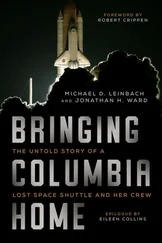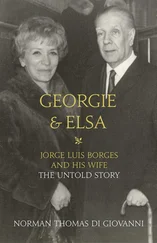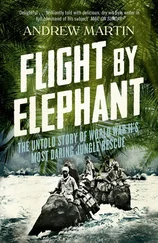Perhaps our most dramatic success, which was recorded on video film from the roof of the British Embassy, was the strike against the ammunition stockpile at Kharga garrison on the western outskirts of the city. This depot supposedly had the largest storage capacity in Afghanistan, with anything up to 40,000 tons of all types of ammunition, including virtually all the reserve of surface-to-air missiles. I had briefed a number of Commanders to regard this as a priority target, and on 27 August it went up in a spectacular fireball that rose a thousand feet in the air. Missiles flew in every direction, windows vibrated throughout Kabul with each successive explosion, and the fire raged until well into the next day. Scores of Afghan soldiers were killed or injured. The credit was claimed by several Commanders so I carried out an investigation to try to establish whose triumph it was. I examined all the reports, timings, locations and capabilities of the claimants to engage this particular target, before establishing it could have been a Commander from either Khalis’ or Sayaf’s Party.
Because of our lack of an effective answer to the helicopter gunships we always had to carry out our rocket attacks at night. This meant moving into position in the dark, firing in the dark, and then withdrawing before dawn to avoid the inevitable retaliation from the air. With the increasing number of defensive posts and the ever-widening ring of them around Kabul, it was always a risky operation to infiltrate between them to get within range, particularly with the number of men and mules needed for a large strike. I wanted to be able to hit the city by day as well, but it was not until 1986 that we were able to do so.
The idea was to use free flight rockets. A party of six men, each carrying one rocket, would infiltrate to a firing point in the darkness, set up the rockets using improvised bipods of rocks and connect a delayed-action, electrically-operated firing device. The group would then retire, still at night, and 6-8 hours later the rockets would be on their way. If this was done by numerous groups from different directions, by different Commanders, then Kabul could be under attack at any time, day or night. We successfully instituted this method, but only after some delay, as the CIA could not initially meet our requirement for the special firing devices.
General Akhtar had an obsession with Kabul. He was adamant that attacks on Kabul should have priority over all others. If a Commander made known to the general that he wanted heavy weapons to hit the city, then he was well on the way to getting them, even if I was opposed. Keeping the pressure on the capital was the fundamental theme of our strategy. If Kabul fell we had won the war—it was as simple as that.
Because of its importance the majority of the Pakistani teams of advisers were used against Kabul. As I have indicated before, I was not initially enthusiastic about committing our nationals inside Afghanistan. However, when General Akhtar instructed me to step up the pressure on the city in 1984 I resolved to make the maximum use of them. Of the eleven teams sent in that year seven were used against Kabul. The attacks they led were spread out over the period April to November, and lasted for up to six weeks.
I selected the targets with care. They were to be primarily Soviet installations, the successful attack of which would become well known outside of Afghanistan through foreign embassies and the media. Originally I chose eight objectives, but in the event the last one could not be carried out due to the onset of bad winter weather. The targets were Kabul airfield, Darulaman Palace, Kharga garrison, the Soviet Embassy, Microrayan, Rishkoor garrison, and Chihilasatoon, which was a Soviet barracks area and housed some key officials (see Map 12). Each team had alternative targets.
The team tasked with Rishkoor had an interesting experience with the enemy garrison at one of the posts on their route, which was not untypical. The Commander had been called for training in June for three weeks on the MBRL. The Pakistani major with his two NCOs who were to accompany them were among the instructors on the course. The first that the Commander and his men knew that they would have advisers with them was on the Pakistan border, just prior to their move back into Afghanistan. They were to make for Chakri, some 35 kilometres SE of Kabul, where the Commander had his operational base.
The journey to Chakri (Map 13), via Ali Khel, took seven days, so it was early August before the major and the Commander could start the detailed reconnaissance necessary to confirm the route to a suitable firing point. The three Pakistanis, the Commander and an escort of six Mujahideen spent two days and a night on their reconnaissance. The Commander, who knew the area well, explained that two platoon-sized posts that formed a part of the outer ring of defences would have to be bypassed if they were to get within range.
Back at the base the details of the plan were put together. The Commander had returned with fifty men from the course, all trained on the MBRL, so they would provide the firing party and its covering group, and guide the mules. Another fifty men would be needed as escorts and to man the two 82mm mortars and three machine guns—in total a sizeable force of 100 Mujahideen with twenty-five mules. They wanted to mount a worthwhile attack, so had decided to take sixty rockets, rendering a smaller force impractical.
My major felt that security would be difficult as they crossed the Logar River, as this area was heavily populated, but the Commander knew the people well and was confident they would go unhindered. There seemed to be no answer to the need to pass close to at least one of the guard posts other than a long, laborious, and probably noisy, detour. The Commander’s solution was to send a messenger direct to the enemy post to demand safe passage on pain of their position being destroyed. My team thought this somewhat unorthodox and were sceptical when the messenger returned to say that he had to go back in three nights’ time as the Afghan platoon commander had to consult his Soviet adviser.
On his next visit the Afghan officer said that, with great difficulty, he had persuaded the adviser to allow the Mujahideen through, but only on condition that while the rocket attack was in progress the post could open fire, but in the wrong direction. When the firing party withdrew the garrison would open up on the area of the firing point. The Mujahideen Commander was quite satisfied with this arrangement, but, naturally, my team was far from happy. The decision was the Commander’s, so the Pakistanis had to go along with it, although the major intended to position the mortars and machine guns to cover the post in case of treachery.
Starting from Chakri in the afternoon, moving fast, and on through the night the hide was reached two hours before dawn. The next day was spent crouched among the boulders under blankets, overlooking the Logar Valley. Immediately after last light they left for the 9-kilometre march to the firing position. The footbridge-crossing over the river and the move through the villages was disturbed only by a few barking dogs. Then, by 10.30 pm the force was approaching the gap between the Afghan posts. At a distance of 600 metres the major sited the mortars and machine guns on a low spur off the track from which the post could be covered. The team’s sergeant was left with this group.
The main body moved, with the mules, in single file towards the post. This was the moment of truth, for no matter how careful they were it was impossible to avoid some slight noise as a mule kicked a loose stone, or a man’s weapon knocked against a rocket or part of the MBRL. The column passed within 20 metres of the Afghans, with a sentry standing in his trench clearly visible. No challenge, no whispered exchange; the Mujahideen passed by like so many ghosts.
Читать дальше












